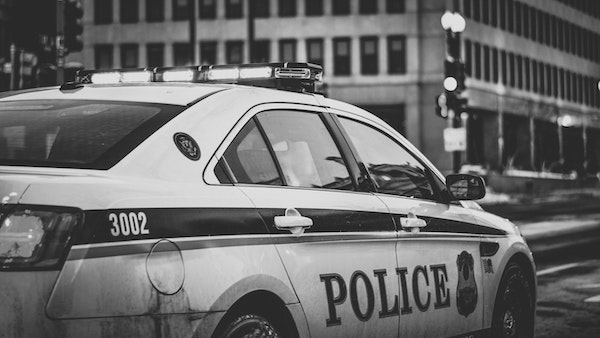Last summer, Sarah and I visited the University of Tennessee Law Enforcement Innovation Center (LEIC) in Oak Ridge, Tennessee. We are fortunate to be part of a project focused on improving law enforcement de-escalation tactics for veterans in crisis through a grant from the national Office of Community Oriented Policing Services (COPS).
The goal of this project is to create an immersive, self-paced online learning experience for police officers to teach them methods of de-escalation. Applying our collaborative capacity-building model, we worked through the initial design on-site with Emily Miller, their curriculum development specialist, and Greg Coker, their lead trainer and our primary subject matter expert.
Our days were split between design and ideation sessions and experiencing different elements of the Center’s live training environments. Part of our visit included a tour of the facilities, where they house the comprehensive National Forensics Academy™, complete with a lab and blood room. During our tour of the lab, we learned how one of their previous trainees invented a new, less expensive technique for capturing fingerprints. We also learned how they teach blood spatter analysis and why they use real blood in the blood room. The blood room and body farm (located off-site) are stocked with real blood and bodies so trainees can process real environments and search for and analyze real bodies in the field with varying temperatures and situations. They are challenged and then given an opportunity to deconstruct their own performance. We absolutely love these kinds of engagements because we learn so much about other industries, meet trainers with different backgrounds, and explore different teaching methods.
While we could have spent days learning about the forensics side of things, and might visit the body farm (real cadavers!) in a future visit, our project was specifically covering de-escalation tactics. Currently, LEIC runs several in-person training sessions throughout the country and brings some groups to their facility to leverage their 270-degree immersive video simulator.

Running on VirTra, an instructor operates scenarios from a computer outside the simulator and controls different variables and responses based on what actions the trainee(s) take. Students can interact by voice and physically move around the space to engage different screens. Pairs of officers can practice spacing and cover tactics, critical for lead and cover officer training.

While some scenarios are focused on threat recognition and response through use of force, others provide practice of de-escalation tactics through vocal response. The instructor manually drives the conversation branching in the simulation, and reprimands trainees with physical feedback (not unlike a dog’s bark collar).

Equipped with modified weapons and belt “zappers”, Sarah and I were able to experience some of the training scenarios first-hand.

Can you imagine receiving an electrical shock when trying to engage a suspect, all while learning how to power through the physical pain and surprise to continue de-escalation? The simulation incorporated these elements to recreate both visual and physical stimuli an officer might encounter in a real situation.
One of the most intense scenarios we participated in was an active shooter situation. Not only was it eye-opening to experience the complex situations from an officer’s perspective (our heart rates were through the roof), it reinforced the value of realistic simulation in training. We were definitely better “officers” and citizens after going through these scenarios, and now have more empathy for officers and first responders facing threatening situations.
From a technology perspective, we geeked out at the possibilities of this simulator and blending it with our online solution. The system already tracks scenario branches taken and shots fired in volume, precision, and speed, including timestamps. These results are analyzed and discussed with the trainees in live sessions. We envision a way to capture xAPI statements for this data and compare to the interactions we capture from the online scenarios for more comprehensive performance measurement.

Through our collaborative process, we help build capacity with clients to extend their abilities and improve the quality of their output. As we continue to work on our active project, we also introduce other innovative techniques and design concepts that LEIC can implement in existing and future projects. We are excited to continue learning about the important topic of de-escalation and launching a curriculum that helps law enforcement better serve and support our veterans that are in crisis.

